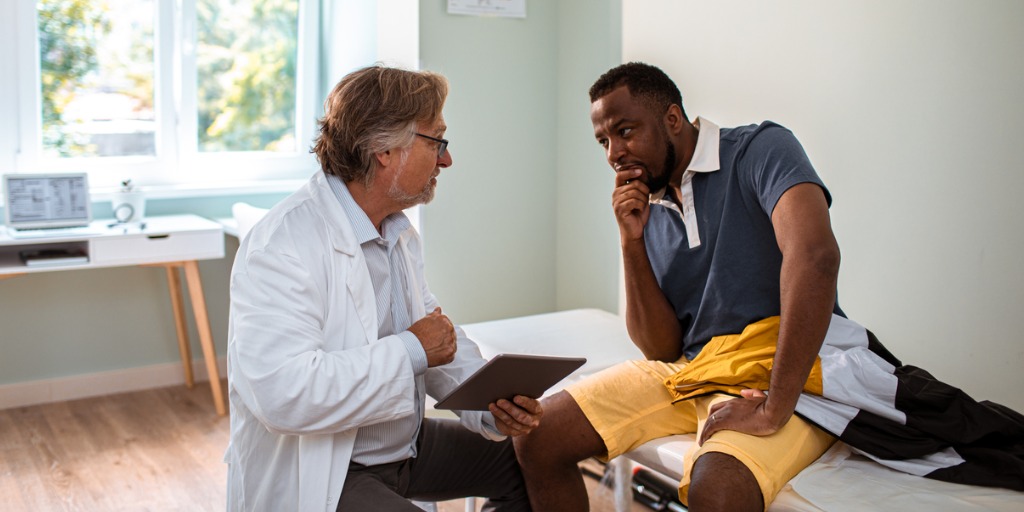Sickle cell disease treatment guidelines

Sickle cell disease (SCD), a genetic condition presented at birth, is a group of inherited red blood cell disorders. SCD affects millions of people worldwide, and while the exact number of people living with SCD in the U.S. is unknown, it is estimated that it affects approximately 100,000 Americans.
SCD causes the production of abnormal hemoglobin. Sickle cells die early, which causes a constant shortage of red blood cells. SCD can be painful and cause other serious problems such as infection and stroke. SCD is a disease that worsens over time. However, treatments are available that can prevent complications and relieve symptoms.
Just as symptoms and severity can be different for each person, treatment options also vary depending on the person’s condition. We take a look at some of the prominent SCD treatments and guidelines.
Medication management
There are a few approved medications that can help improve or relieve the symptoms of SCD.
Hydroxyurea: Daily hydroxyurea reduces the frequency of painful crises and might reduce the need for blood transfusions and hospitalizations. For some patients, it may take months (and even over a year) to establish the right dosage and reap benefits.
Endari: The FDA approved this drug in 2017 for use by patients age 5 and older, making it the first approved pediatric treatment for SCD, and the first new treatment for adults in almost 20 years. Endari helps the body generate antioxidants, which allow sickle red blood cells to regain the flexibility needed to travel through blood vessels and capillaries in order to carry oxygen throughout the body. It helps in reducing the frequency of pain crises.
Adakveo: This drug was approved by the FDA approved in 2019 for treatment of sickle cell anemia. Given through a vein, it helps treat painful vaso-occlusive crisis events caused by SCD in patients 16 and older. Side effects can include nausea, joint pain, back pain and fever.
Oxbryta: The FDA approved this oral drug in 2019 to improve anemia in people with SCD. The drug targets the abnormal hemoglobin, and works by preventing hemoglobin from sticking together, which allows the red blood cells to maintain a more normal and flexible shape. Side effects can include headache, nausea, diarrhea, fatigue, rash, and fever.
Pain-relieving medications: Pain is a common and sometimes debilitating symptom of SCD. Clinicians may recommend painkillers (acetaminophen or NSAIDs), opioids (codeine or morphine) for chronic pain, ketamine for acute pain, and in some cases, daily penicillin to prevent infections, which should be complemented by vaccinations and antibiotics in cases of infection.
Medical procedures
Additional treatments for SCD might include blood transfusions, and, for some children and teenagers, stem cell transplants.
Blood transfusions: Anemia is a very common complication of SCD. Blood transfusions are one way to treat anemia. In a red blood cell transfusion, red blood cells are removed from a supply of donated blood, then given through a vein to a person with sickle cell anemia. This increases the number of normal red blood cells, which helps reduce symptoms and complications. This procedure doesn’t come without risks, which include an immune response to the donor blood, which can make it hard to find future donors; infection; and excess iron buildup in your body.
Stem cell transplant: Also known as a bone marrow transplant, this procedure involves replacing bone marrow affected by sickle cell anemia with healthy bone marrow from a donor. The procedure usually uses a matched donor, such as a sibling, who doesn't have sickle cell anemia. The procedure is only recommended for people who have significant SCD complications. The risks associated with a bone marrow transplant are critical: your body might reject the transplant. Transplants can sometimes cause severe side effects, including occasional life-threatening illness or death.
Lifestyle changes
There are a few simple things that people with SCD can do to help prevent and reduce symptoms:
- Drink a lot of water. Dehydration can increase the risk of a sickle cell crisis.
- Avoid extremely hot or freezing temperatures. Exposure to extreme temporal elements can increase your risk of a sickle cell crisis.
- Avoid places or situations with exposure to low oxygen levels. Exercising regularly is a good thing, but be careful not to overdo it. Discuss with your doctor how much exercise is right for you.
Research studies help us learn more about SCD to develop better treatments and medical breakthroughs.
Topics: For Patients

